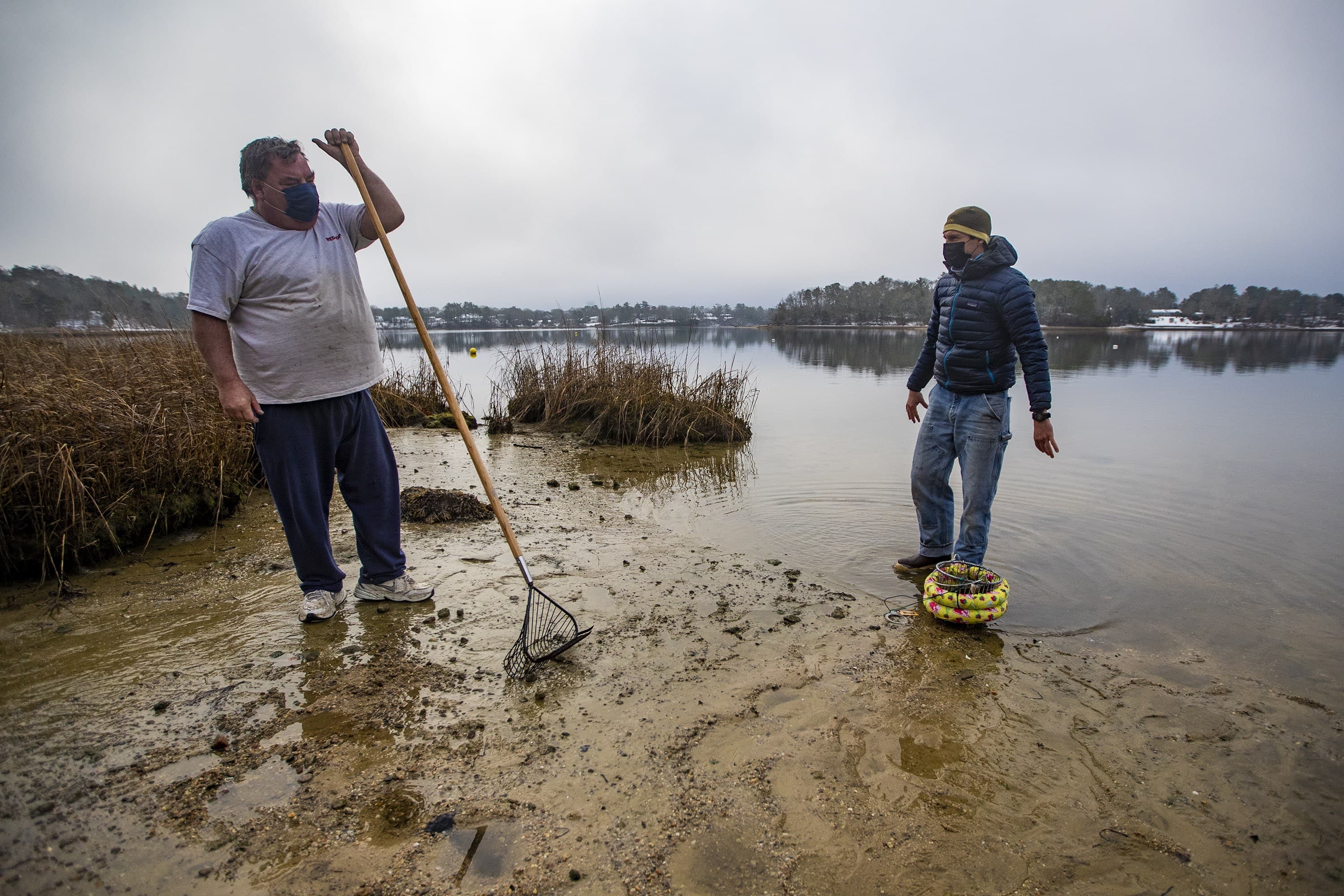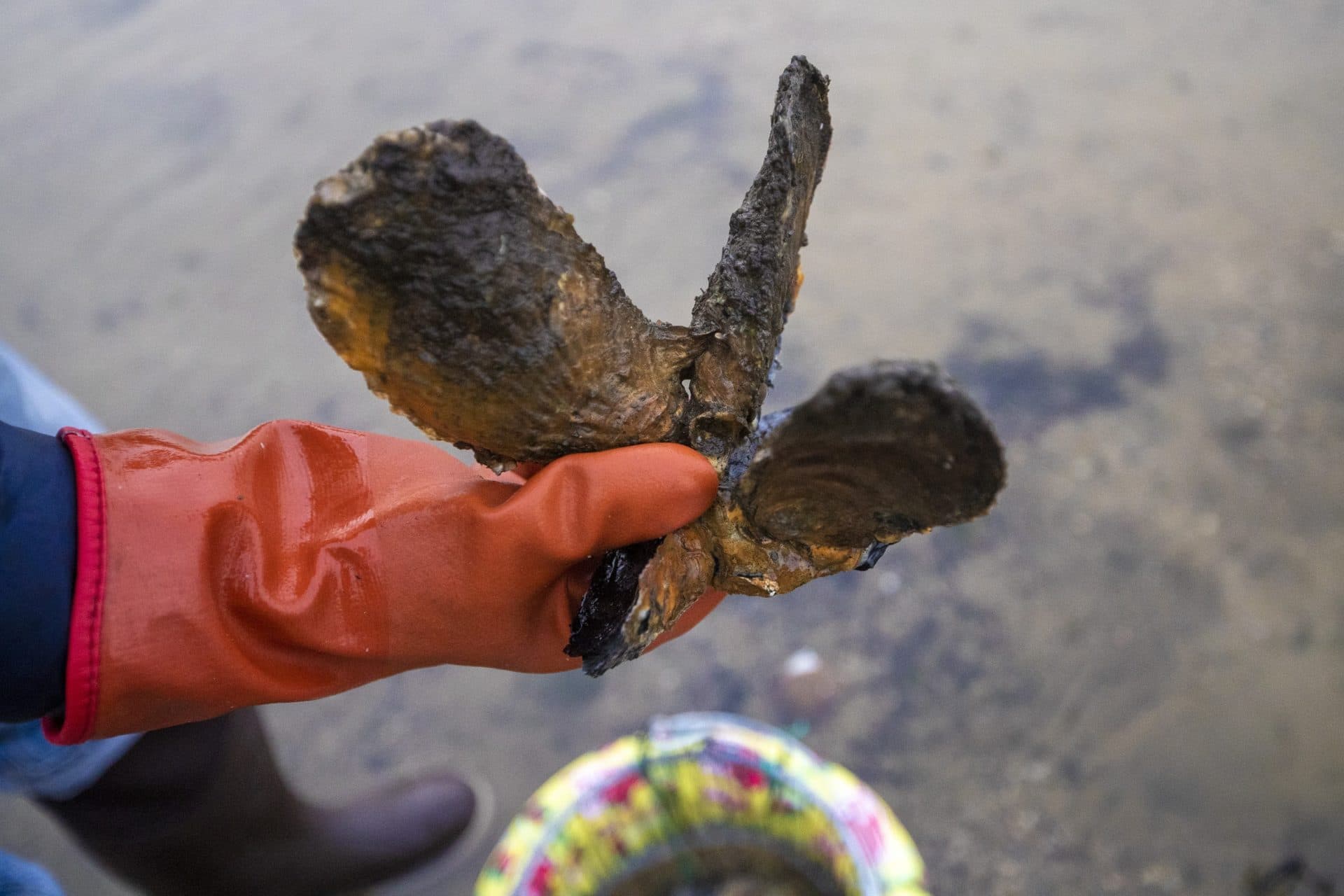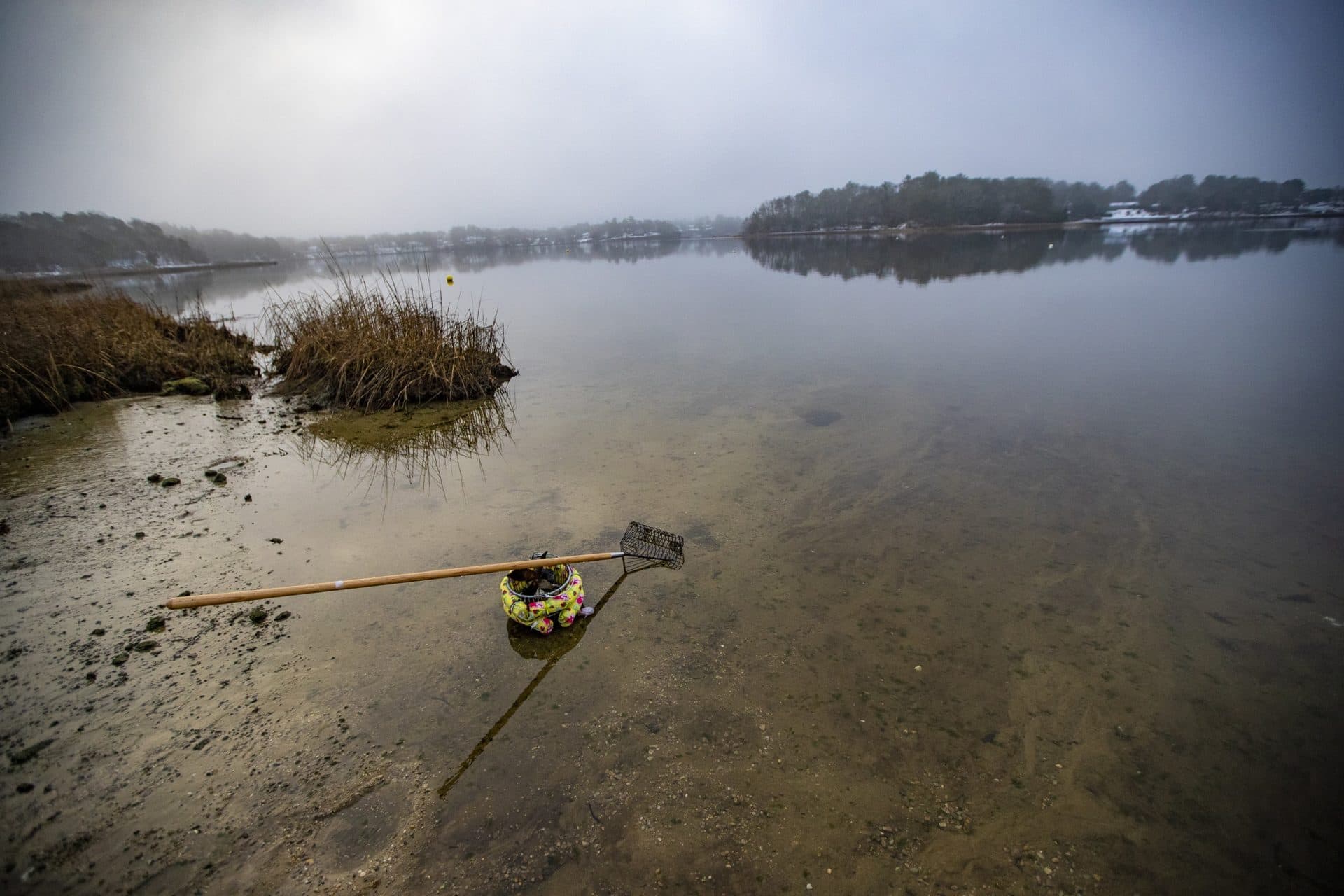Advertisement
Program Offers A Lifeline To Fishermen, And A Home For Unwanted Oysters

Standing on a cold, wet beach, Bruce Silverbrand rummages through a metal basket of oysters. He picks out a huge one — almost as big as a mitten, with a knobbed and lumpy shell. It’s what people in the shellfish industry call a “big ugly,” though Silverbrand abhors the term.
"I would never call an oyster ugly — these are my babies," he says. He considers the monster in his hand for a moment, turning it over for a good look. "This is not a bad looking oyster, really, for a big oyster."
Silverbrand runs the Buttermilk Bay Oyster Company in Bourne. He’s been a shellfisherman his whole adult life — about 30 years — but he started growing oysters just a few years ago. This was the year they were going to turn the corner, he says. Then came COVID-19.
"The beginning of this year, we sold 28,000 oysters in a matter 10 weeks," he says. We were really rolling. And then all of a sudden the COVID comes and, you know — it stops everything."
The oyster industry in Massachusetts is growing fast, doubling in size every five years and landing about $30 million worth of oysters in 2019. But this year the pandemic has hit the industry hard. In June, fishermen were looking at an 80% loss for the year, according to Jeff Kennedy, a shellfish program leader for the Massachusetts Division of Marine Fisheries
"The growers have lost this this huge amount of revenue," says Kennedy.
While that outlook has improved somewhat, Silverbrand says about 95% of his sales go to restaurants. And with restaurants closed, he's had few places to sell his shellfish. The Nature Conservancy and the Pew Charitable Trusts have stepped in to help, launching a program that aims to buy 5 million oysters from struggling farms in seven states, and plant the shellfish into degraded coastal waters.

"Oysters are considered a keystone species in this habitat," says Steve Kirk, coastal program manager for The Nature Conservancy, referring to the Buttermilk Bay estuary. "The system depends on there being a healthy population of shellfish."
Kirk says many coastal oyster populations have been decimated by overfishing, development, pollution and disease. For years, The Nature Conservancy has been buying oysters to re-populate damaged coastal waters like Little Buttermilk Bay. The oysters clean the water, grow huge (for oysters) and cluster into reefs that provide habitat for other animals like black seabass, blue crabs and lobsters.
"This morning in the rake I pulled up a little oyster toadfish," says Kirk. "I sort of woke him up from resting in the in the oyster reef and tried to bring him in, but he swam out of my basket. But that's a little anecdote of how the reef is working."
Advertisement

The pandemic-induced restaurant closures caused another headache for oysters farmers: with no buyers, oysters sat in their pens and kept growing. That’s a problem because restaurants don’t buy big oysters — anything longer than about three-and-a half inches is considered too ugly and unappetizing.
Luckily, even if the big uglies aren’t good for selling, they are just fine for reef building. State shellfish manager Jeff Kennedy says there's more to the program than picking up oysters in one place and dumping them in another. To protect against disease spread, shellfish are gown in "biosecurity zones," and must be monitored and tested before they can be moved. While Kennedy says the state contributed no money to this particular oyster-transplant program, they donated staff time and expertise to speed it up and help it succeed.
The Nature Conservancy/Pew program won’t rescue the entire industry from the impacts of COVID. Although the 5 million shellfish they're buying sounds like a lot, there are at least double or triple that number of oysters languishing in Massachusetts farms. But for Silverbrand, the program meant about $10,000 this year — a meaningful percentage of his annual profits.
"It puts a little chunk of money in the bank going into winter, and it moves a lot of oysters we otherwise have nothing to do with," he says. "It’s just a win-win for everybody."
And Silverbrand also likes seeing his babies make good.
"It’s nice to give something back instead of just take," he says. "You know, if we don’t take care of the oceans, they’re not gonna take care of us."
This segment aired on December 24, 2020.
